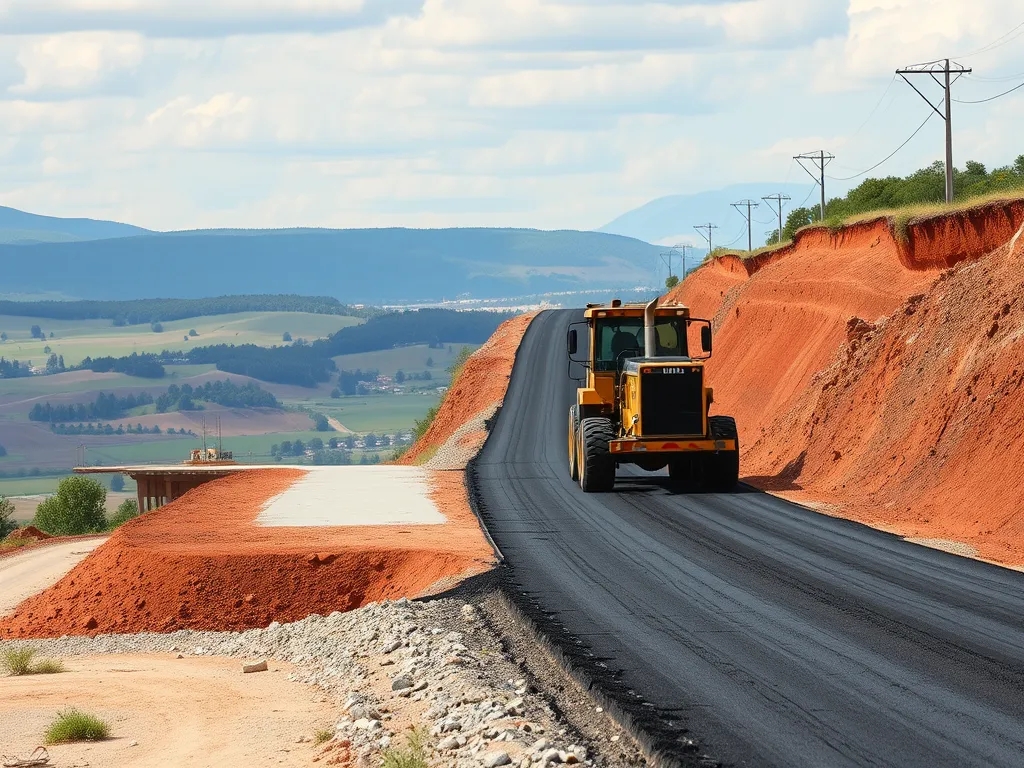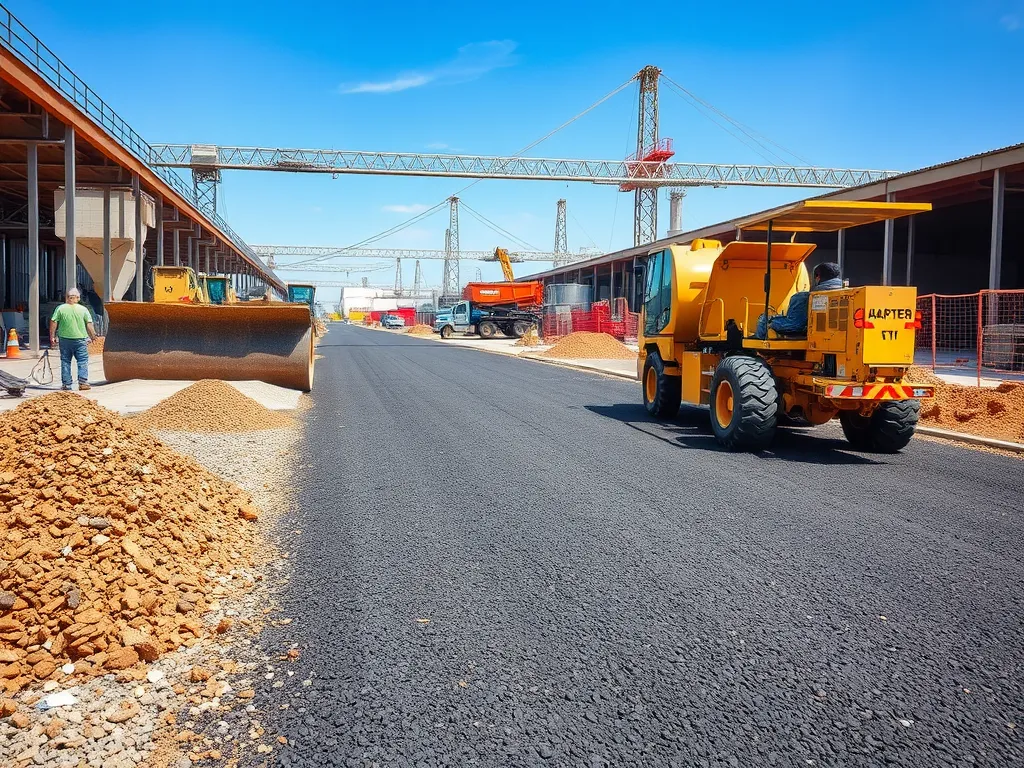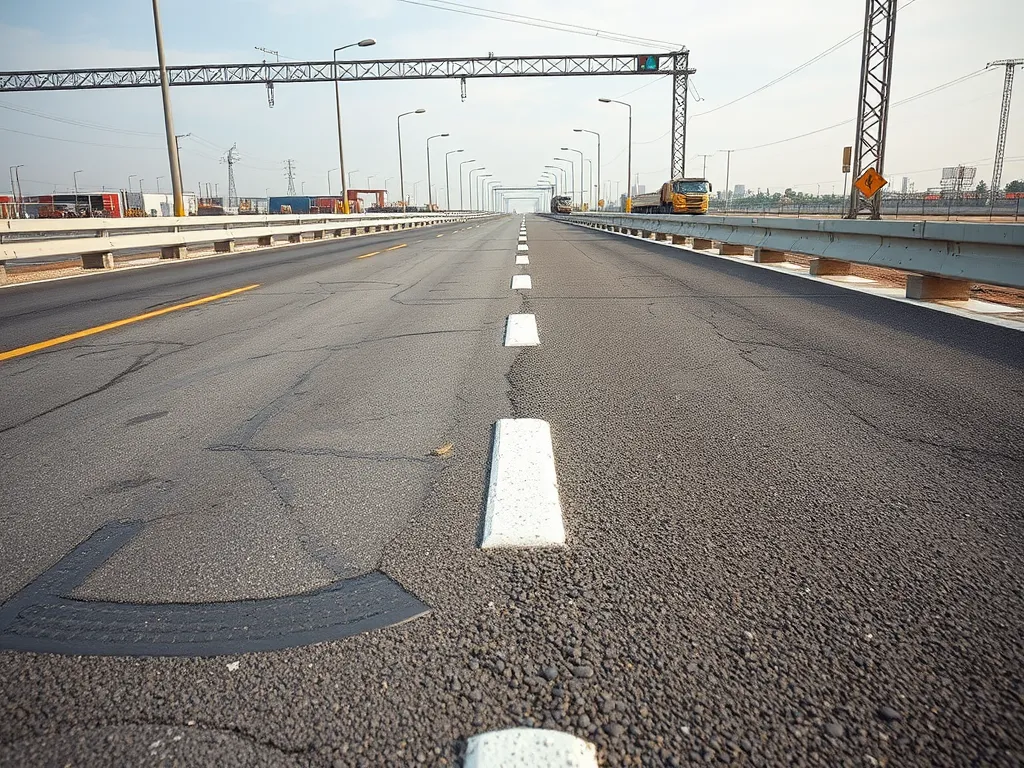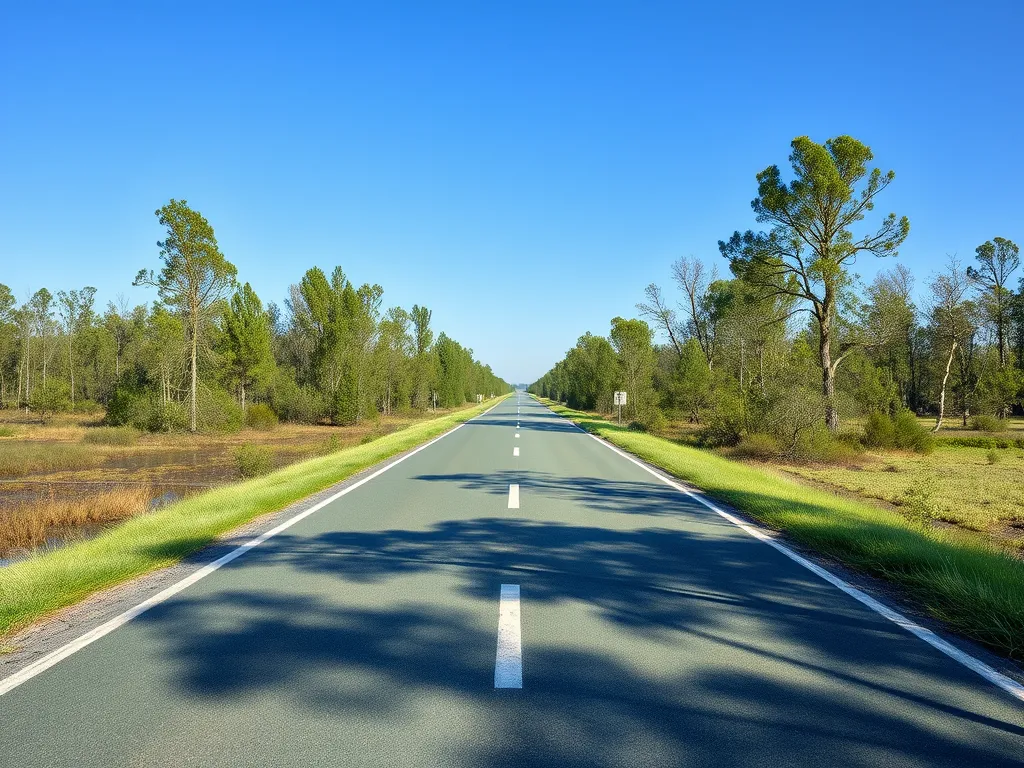Assessing the Financial Viability Of Asphalt Investments
Published on: August 14, 2025 | Last Updated: April 14, 2025
Written By: George Voss
Assessing the financial viability of asphalt investments means determining if paving projects will deliver profits by balancing costs, risks, and revenue. This requires analyzing upfront expenses like materials ($450–$600 per ton for liquid asphalt in 2023) and equipment, estimating long-term maintenance (3–5% annual resurfacing costs), and projecting demand based on regional infrastructure needs. Investors use metrics like ROI, payback periods (3–7 years for mid-sized projects), and net present value to gauge profitability against alternatives like concrete or gravel.
This article explains how to evaluate asphalt investments step-by-step. Learn methods like cost-benefit analysis and IRR calculations. Explore factors impacting market demand, including sustainability trends like recycled asphalt (RAP) usage. Compare financial models for asphalt plants or paving contracts. Get data on maintenance costs, regulatory risks, and tax incentives. Real-world examples show how to avoid common pitfalls and maximize returns in this $30B+ U.S. industry.
Contents
- Understanding Financial Viability in Asphalt Investments
- Methods to Evaluate Asphalt Investment Financial Viability
- Analyzing Market Demand for Asphalt Investments
- Cost Structures in Asphalt Investment Viability
- Financial Models for Asphalt Investment Evaluations
- Risk Assessment in Asphalt Investment Viability
- Longevity and Maintenance Costs Of Asphalt Investments
- Environmental Considerations in Asphalt Viability
- FAQ: Asphalt Investment Financial Viability
- Closing Thoughts
- Additional Resources for You:
Understanding Financial Viability in Asphalt Investments
Financial viability in asphalt projects depends on balancing upfront costs against long-term returns. This requires analyzing material prices, labor rates, and regional demand while accounting for environmental regulations and operational risks.
What Determines Financial Viability for Asphalt Projects?
Three primary factors drive viability: input costs, market conditions, and project lifespan. Material expenses like PG binders (performance-graded asphalt cement) and aggregates make up 55-70% of total costs. Labor rates vary by region—Midwestern crews average $28/hour, while coastal teams exceed $35/hour. Market demand hinges on infrastructure budgets and repair cycles. For example, highways require resurfacing every 8-12 years, creating recurring revenue streams.
Lifecycle analysis tools like Paver LCA or Net Present Value (NPV) models help quantify longevity. A 4-inch asphalt overlay lasts 15+ years with proper maintenance, while thin surface treatments degrade in 5-7 years. Superpave mix designs (Superior Performing Asphalt Pavements) improve durability, cutting long-term repair costs by 18-22%.
Key Metrics for Asphalt Investment Viability
Track these metrics to assess asphalt investment viability:
ROI: Target 12-15% for private projects; public works often accept 6-8% due to tax funding. IRR: Aim for 10%+ over 20 years, factoring in inflation and material price swings. Cost per ton: Current averages range $50-$80/ton, including RAP (recycled asphalt pavement). Payback period: Commercial lots recoup costs in 3-5 years; highways take 7-10 years.
Advanced metrics include production yield (3.5-4.2 tons/hour for mid-sized plants) and waste ratios. Using warm-mix asphalt (WMA) at 250°F instead of hot-mix at 300°F reduces fuel costs by 20%, boosting annual margins by $48,000 for a 50,000-ton facility.
With these metrics established, the next step involves applying evaluation methods to concrete project data.
Methods to Evaluate Asphalt Investment Financial Viability
Assessing asphalt investment viability requires analyzing costs, returns, and timelines. Tools like cost-benefit analysis, ROI models, and payback periods aid in making data-driven choices.
Cost-benefit Analysis for Asphalt Projects
This method balances upfront spending against long-term gains. It highlights if a project will turn a profit or drain funds.
Identifying Initial and Ongoing Costs
Start by listing all costs. Initial costs include materials ($80–$120 per ton for hot-mix asphalt), labor ($25–$40 hourly for paving crews), and permits. Ongoing costs cover maintenance (crack sealing at $0.10–$0.50 per linear foot), repairs, and fuel for machinery. Don’t skip indirect costs like traffic control or site prep.
Calculating Revenue Potential
Revenue streams vary by project type. Road contracts might bring $2–$5 per square foot. Parking lots can generate leasing income. Toll roads yield long-term cash flow. Factor in local demand—urban areas with high traffic often justify higher pricing.
Return on Investment (ROI) Calculations
ROI shows profit percentage relative to costs. Use this formula: (Net Profit / Total Investment) x 100. A $500k project generating $750k in revenue has a 50% ROI. High-traffic locations or premium mixes (like polymer-modified asphalt) boost ROI by 15–30%.
Payback Period Models for Asphalt Investments
This metric shows how fast a project recovers its costs. Shorter paybacks mean lower risk.
Simple vs. Discounted Payback Periods
A simple model divides total costs by annual cash flow. A $200k project with $50k yearly profit pays back in 4 years. Discounted models factor in inflation and funding costs, adding 1–3 years to timelines. Always compare both.
Internal Rate Of Return (IRR) for Asphalt Projects
IRR pinpoints annual growth rates that make a project’s net present value zero. Targets above 12% signal strong asphalt investment viability. For example, a 10-year road project with $1.2M net cash flow might hit 18% IRR if maintenance stays below 3% annually.
With financial tools in place, the next step is gauging how market shifts affect asphalt project viability.

Analyzing Market Demand for Asphalt Investments
Market demand directly shapes revenue potential when assessing financial viability of asphalt investments. Trends in infrastructure spending, urban development, and repair cycles determine where asphalt projects thrive.
Regional Demand for Asphalt Paving and Repair
Demand varies by region due to climate, road networks, and funding. Southern states like Texas and Florida require frequent repairs from heat-induced cracking. Northern regions prioritize pothole fixes after winter freeze-thaw cycles. Urban areas with aging infrastructure, such as New York City, spend $150–$250 per ton on asphalt resurfacing. Rural markets focus on new road construction, driven by agricultural or energy projects.
- Sun Belt states: 8–12% annual growth in repair contracts
- Midwest: $3.2B allocated for highway upgrades in 2024
- Coastal regions: Storm damage repairs boost short-term demand
Competitor Analysis in the Asphalt Sector
Local competition impacts pricing and project margins. Evaluate regional players using:
- Market share: Top 3 firms often control 40–60% of local paving contracts
- Service mix: Full-service operators (milling, paving, sealcoating) vs. niche providers
- Pricing: $85–$125 per ton for standard mixes, plus $2–$5/sq.ft for installation
Barriers to entry matter. A new asphalt plant costs $3M–$5M, limiting small competitors. Track bid patterns—municipal contracts often favor firms with recycled asphalt pavement (RAP) capabilities.
Impact Of Sustainability Trends on Asphalt Demand
Green building codes now influence 65% of public asphalt projects. Recycled asphalt reduces material costs by 20–30% while meeting EPA guidelines. Warm-mix asphalt (WMA), produced at 50°F lower temperatures, cuts fuel use by 35%. States like California mandate 15–20% RAP in highway projects. LEED-certified developments increasingly specify porous asphalt for stormwater management, priced 12–18% higher than conventional mixes.
- Federal grants: Up to $250K for eco-friendly asphalt initiatives
- Carbon taxes: $50/ton penalties in some regions raise virgin binder costs
- Greenroads Certification: Projects using sustainable mixes see 15% faster approval times
Market trends set the baseline for revenue projections. Next, break down how cost structures determine profit margins in asphalt investments.
Also See: Advantages Of Warm Mix Asphalt: Benefits for Pavement
Cost Structures in Asphalt Investment Viability
Assessing the financial viability of asphalt investments requires breaking down fixed and variable costs. These structures dictate profit margins and long-term feasibility for paving contractors, municipalities, and private developers.
Upfront Costs: Equipment and Materials
New asphalt projects demand heavy machinery and quality materials. Pavers, rollers, and milling machines account for 35-50% of upfront spending. A single asphalt paver ranges from $150,000 to $500,000. Materials like aggregates, bitumen, and polymer-modified binders (PG 64-22 or PG 76-16) add $50-$80 per ton. Recycled asphalt pavement (RAP) cuts material costs by 20-30% but requires processing equipment.
- Pavers: $150K–$500K
- Material blends: $50–$80/ton
- RAP processing setup: $75K–$200K
Ongoing Maintenance and Repair Expenses
Asphalt surfaces need regular upkeep to extend service life beyond 15–20 years. Sealcoating every 3–5 years costs $0.15–$0.25 per square foot. Crack filling and pothole repairs add $2–$5 per linear foot. High-traffic areas may require full-depth patches at $25–$50 per square yard. Climate plays a role—freeze-thaw cycles double maintenance costs in northern states compared to southern regions.
Government Incentives and Tax Implications
Federal and state programs offset asphalt project costs. The EPA’s Recycled Materials Policy grants up to $100,000 for RAP usage exceeding 30%. Tax credits under Section 179 allow $1 million in equipment depreciation annually. States like California offer $5–$10 per ton rebates for warm-mix asphalt, lowering production emissions by 20%. Municipal contracts often prioritize bids with recycled content, boosting project win rates by 15%.
Breaking down these cost layers provides clarity for asphalt investment viability assessments. Next, tailored financial models translate these numbers into actionable forecasts.

Financial Models for Asphalt Investment Evaluations
Accurate financial modeling separates profitable asphalt ventures from money pits. Specialized tools track cash flow, break-even points, and sensitivity to material price shifts.
Roi-driven Budgeting Strategies
Target ROI rates of 15-25% guide asphalt project budgets. Factor in regional asphalt prices ($90-$150 per ton), labor wages ($22-$38/hour), and equipment financing rates (5-9% APR). Use Net Present Value (NPV) models to weigh multi-year returns against capital outlays for plants or pavers.
Customized Financial Modeling for Asphalt Plants
A mid-sized asphalt plant producing 150,000 tons annually needs tailored models. Variables include production capacity utilization (65-85%), local aggregate costs ($10-$18/ton), and RAP (Recycled Asphalt Pavement) integration rates (20-40%). Automation tools cut labor costs by 12-18% in plants using PG (Performance-Graded) binders.
Evaluating Production Efficiency Metrics
Track three metrics daily: yield per batch, fuel consumption per ton, and downtime rates. Plants hitting 92%+ operational efficiency net 8-12% higher annual profits.
Cost per Ton of Asphalt Production
Break down costs: aggregates (55-65%), PG 64-22 binder ($600/ton), energy ($4.50-$7.20/ton). Plants using 30% RAP mix save $3.50-$5.80 per ton. Monitor seasonal price swings in liquid asphalt ($450-$750/ton).
Fleet Management and Operational Costs
Track paver ($85/hour), roller ($65/hour), and trucking ($2.80/mile) costs. GPS-fueled route optimization slashes fuel bills by 9-15%. Preventive maintenance schedules extend equipment lifespan by 3-5 years, avoiding $120k+ replacement costs.
With financial frameworks in place, the next step involves stress-testing these models against real-world risks—from bitumen price spikes to emission rule changes.
Risk Assessment in Asphalt Investment Viability
Managing risks directly impacts profit margins when assessing financial viability of asphalt investments. Three critical factors shape project outcomes: material costs, compliance demands, and operational efficiency.
Market Volatility and Material Price Fluctuations
Bitumen prices swung 20-30% in 2023, driven by crude oil trends and supply chain disruptions. Aggregates like limestone and granite added 15% cost spikes in high-demand regions. PG (Performance-Graded) binders, engineered for specific climates, vary by $8-$12 per ton based on crude oil benchmarks. Locking multi-year contracts with suppliers or using recycled asphalt pavement (RAP) cuts material expenses by 18-25%.
| Material | 2022 Avg. Cost/Ton | 2023 Avg. Cost/Ton |
|---|---|---|
| Virgin Bitumen | $85 | $102 |
| RAP | $24 | $28 |
| Limestone Aggregate | $15 | $17.50 |
Regulatory Compliance Costs
EPA stormwater permits add $5,000-$15,000 per site, while OSHA safety training programs cost $2,800 annually for a 10-person crew. States like California mandate 40% RAP usage in public projects, requiring $50,000-$120,000 in plant upgrades. Non-compliance fines reach $37,500 per violation under Clean Air Act standards.
Mitigating Operational Risks in Asphalt Projects
Infrared asphalt patching systems reduce repair labor by 60% compared to traditional methods. GPS fleet tracking slashes fuel costs by 12-18% through optimized routing. Preventive maintenance schedules extending paver lifespan to 8-10 years (vs. 5-7 years) lower equipment replacement costs by $150,000 per unit. Bonding requirements for public contracts, often 10-20% of project value, get reduced by 30% with documented safety records.
These risk management strategies directly affect long-term performance metrics. Next, we examine how maintenance planning intersects with pavement durability over 15-20 year lifecycles.

Longevity and Maintenance Costs Of Asphalt Investments
When assessing the financial viability of asphalt investments, lifespan and upkeep costs directly shape profitability. A well-built asphalt surface lasts 15–25 years, but material choices, climate, and maintenance routines determine real-world performance.
Factors Affecting Asphalt Lifespan
Durability hinges on two core elements: construction quality and environmental stressors. Ignoring either can slash projected returns by 30–50%.
Material Quality and Installation Standards
High-grade PG (performance-graded) binders and angular aggregates resist cracking. Proper compaction—achieving 92–96% density—prevents water infiltration. Subpar materials or rushed installation cut lifespan by 5–8 years, doubling repair costs.
| Material Grade | Lifespan | Cost per Ton |
|---|---|---|
| PG 64-22 | 12–18 years | $45–$65 |
| PG 76-28 | 20–25 years | $80–$110 |
Climate and Usage Impact on Degradation
Freeze-thaw cycles in northern states accelerate cracking. UV radiation in southern regions softens surfaces, increasing rutting. Heavy truck traffic (10,000+ ESALs/year) wears pavements 8x faster than passenger vehicles. Urban highways may need resurfacing every 5–8 years versus 10–15 for residential roads.
Estimating Long-term Maintenance Expenses
Proactive care extends pavement life at 25% the cost of reconstruction. Sealcoating every 3–5 years ($0.14–$0.25/sq ft) and crack filling ($0.50–$1.50/linear ft) prevent major repairs. Letting minor damage escalate raises costs by 300–600% over a decade.
| Maintenance Activity | Frequency | Cost per Sq Ft |
|---|---|---|
| Sealcoating | 3–5 years | $0.14–$0.25 |
| Patching | As needed | $2.50–$4.00 |
| Overlay | 10–15 years | $3.00–$5.50 |
Lifecycle cost analysis (LCA) tools factor in regional climate data, traffic forecasts, and material specs to predict 20–30 year budgets. Projects in wet climates often allocate 15–20% more for drainage fixes versus arid zones.
These maintenance costs directly influence the next critical layer of asphalt investment viability: environmental compliance and recycling economics.
Environmental Considerations in Asphalt Viability
Balancing profit with eco-friendly practices shapes modern asphalt projects. Recycling programs, emission controls, and regulatory compliance directly influence budgets. Ignoring these factors risks fines, project delays, or missed incentives.
Recycling and Sustainability Costs
Using Recycled Asphalt Pavement (RAP) cuts material spending by 20-30% compared to virgin mixes. Plants equipped with RAP processing systems spend $250,000-$500,000 upfront but lower production costs to $45-$70 per ton. LEED-certified projects may qualify for green building grants up to $100,000. Still, sourcing quality recycled materials requires testing fees between $1,200-$2,500 per batch.
| Recycling Factor | Cost Range | Long-Term Savings |
|---|---|---|
| RAP Utilization (30%) | $12-$18/ton | 22% lower yearly spend |
| Energy-Efficient Plants | $1.2M-$2.5M setup | 15% reduced fuel use |
| Porous Pavement Systems | +$3.50/sq ft | 40% less stormwater fees |
Compliance With Environmental Regulations
The Clean Air Act mandates baghouse filters ($180,000-$350,000) to capture 97% of particulate emissions. Non-compliance fines reach $37,500 per violation daily. Warm-mix asphalt tech reduces paving temps by 50°F, meeting EPA standards while trimming fuel bills by 18%. States like California offer 30% tax credits for carbon-reducing methods like rubberized asphalt.
Stormwater permits under NPDES rules add $8,000-$15,000 in site monitoring yearly. Projects near wetlands may need $20,000-$75,000 in mitigation banking credits. Budgeting for these from the start prevents 6-12 month delays during permitting.
Up next, we break down common questions on balancing ledger sheets with eco-goals in asphalt ventures.

FAQ: Asphalt Investment Financial Viability
How Do I Calculate ROI for an Asphalt Project?
To calculate ROI for an asphalt project, use the formula: (Net Profit / Total Investment) x 100. This will give you the percentage of profit relative to your investment. For example, if you invest $500,000 in a project and generate $750,000 in revenue, your net profit is $250,000, resulting in an ROI of 50%.
What Factors Most Impact Asphalt Longevity?
Several factors influence the lifespan of asphalt, including the quality of materials used (such as performance-graded binders), installation practices (ensuring proper compaction), and environmental conditions (like temperature extremes and traffic loads). High-quality materials and adherence to installation standards can significantly extend the life of asphalt surfaces.
Are There Financing Options Specific to Asphalt Investments?
Yes, there are financing options specifically tailored for asphalt investments. These can include equipment loans for purchasing paving machinery, government grants for eco-friendly initiatives, and tax incentives for using recycled materials. Additionally, some financial institutions offer project financing based on future cash flows generated by asphalt projects.
Closing Thoughts
Assessing the financial viability of asphalt investments requires a comprehensive approach. Key factors such as initial costs, ongoing maintenance, and potential revenue must all be evaluated. Understanding market demand and competitor dynamics also plays a critical role in securing profitable outcomes.
Leveraging financial models like ROI calculations, payback period analyses, and risk assessments will provide clarity. These methods guide decision-making, ensuring that investments align with both current market trends and long-term sustainability goals.
Investors must remain adaptable, considering fluctuations in material prices and regulatory landscapes. Keeping abreast of environmental impacts, including recycling options, is equally vital for fostering a responsible and lucrative asphalt investment.
For more insights, tips, and detailed calculations, visit Asphalt Calculator USA.
Additional Resources for You:
- Lavin, P. (2003). Asphalt Pavements: A Practical Guide to Design, Production, and Maintenance for Engineers and Architects. London: Taylor & Francis.
- Assessing Financial Viability | Department of Finance
- How to Assess the Financial Viability of a Business Before Investing?
- Geosolutionsinc
- The importance of financial viability for businesses | OneAdvanced


